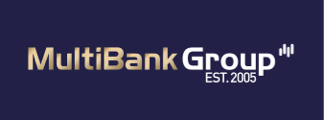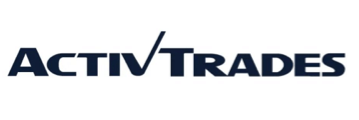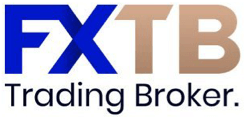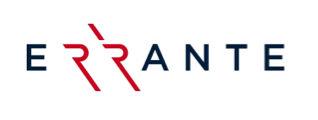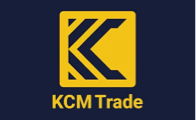IC Markets is widely regarded as one of the most cost-efficient, execution-focused brokers available to active traders across Asia. The company’s proposition is simple yet powerful: provide raw institutional pricing, low-latency infrastructure, and familiar professional platforms without clutter or needless complexity. This focus has attracted a large community of discretionary and systematic traders who rely on dependable fills, consistent spreads, and clear costs to make strategy-driven decisions day after day.

Between 60 to 80% of retail CFD accounts lose money.
| Regulators | ASIC CySec FSA |
|---|---|
| Minimum Deposit | $200 |
| Leverage | Between 1:30 and 1:500 | Payment Methods | Visa Mastercard Bank Transfer Sofort Bitcoin Neteller PayPall |
For Asian traders in markets such as Singapore, Malaysia, Thailand, Vietnam, and the Philippines, IC Markets stands out for three reasons. First, its account lineup is designed around how traders prefer to pay for liquidity—either via raw spreads plus a small commission or through a clean spread-only model—so the cost structure is never ambiguous. Second, the broker supports the technologies experienced traders already use: MetaTrader 4, MetaTrader 5, and cTrader (with TradingView analysis connectivity). Third, the operational environment emphasizes segregated client money, external audits, and disciplined internal controls—features that matter when capital preservation and continuity are non-negotiable.
IC Markets’ digital experience is deliberately minimalist. The interface puts pricing, platform options, and account specifications front and center with clear typography and a restrained color palette. Navigation is intuitive: platform downloads, account comparisons, product specifications, and support are one click away. Rather than leaning on promotions, the brand leads with quantifiable information—spreads, commission schedules, and contract details—reinforcing a professional, execution-first identity that resonates with Asia’s cost-conscious trading community.
From the first visit, expectations are set accurately. Raw spread accounts are presented with explicit per-side commissions; spread-only accounts publish the starting minimums; and the forthcoming Starter tier is described plainly as a simpler on-ramp with higher all-in spreads. This candid tone builds trust and lets traders benchmark effective cost (spread plus commission converted to pips) against their own turnover profile. For Asian clients who often trade during the Tokyo session and the Tokyo–London overlap, that transparency is invaluable because it reduces guesswork about whether a given account model will be cheaper for their style.
The secure client area continues the theme. After login, the dashboard consolidates everything: opening new live or demo accounts, selecting base currencies, setting platform families, and managing deposits and withdrawals. Credentials are issued cleanly, and the audit trail of funding actions is easy to follow. Alerts about pending verification or leverage adjustments are concise. Overall, the first impression is of a broker designed to let serious traders concentrate on execution while the administrative layers stay out of the way.
Regulation
Before evaluating spreads or platforms, Asian traders ask three essential questions: Who regulates the broker? How are client funds safeguarded? And does the firm demonstrate a culture of compliance beyond the letter of the rules? IC Markets addresses these points directly in its official materials for its global entity.
- Seychelles – Financial Services Authority (FSA): IC Markets Global states that it complies with the FSA’s regulatory requirements, maintains internal risk-management controls to ensure adequate capitalization, and supplements those controls with external audits that review operations and accounting processes. This combination aims to ensure ongoing, full regulatory compliance.
Complementing formal authorization, IC Markets emphasizes several practices that matter in daily operations:
- Segregation of client funds: Client money is held in client-segregated accounts with reputable, top-tier banking institutions, keeping those funds distinct from the broker’s operating capital. Segregation is a primary defense against commingling risk and a cornerstone of client protection.
- External auditing and controls: The company highlights external audits that supplement internal risk oversight and accounting—a meaningful signal that independent third parties review the books and processes on a recurring basis.
- Capital adequacy and operational discipline: IC Markets Global references internal controls designed to ensure the firm is sufficiently capitalized to support operations. While capital figures are not published in marketing copy, the explicit focus on adequacy and processes speaks to a continuity-first culture.
For Asian clients, these safeguards translate into practical confidence. Segregated custody and independent audits are clear, verifiable pillars; they are part of why traders comfortable with leverage still expect a conservative operating environment from their broker. As always, prospective clients should confirm which IC Markets entity will onboard them, review the client agreement and product disclosures, and align leverage expectations with the rules applicable to their residency.
Opening an Account – Our Experience
IC Markets’ onboarding process is digital, fast, and clearly explained. Registration begins with basic personal data and platform choice (MetaTrader or cTrader). Know-Your-Customer verification requires a government ID and proof of address; the upload interface is stable, and status indicators in the portal show what remains outstanding. Communication is straightforward; documentation requests are specific, avoiding the ambiguous messages that can slow onboarding elsewhere.
Once verified, the client can create multiple live and demo accounts from the dashboard, each with independent credentials and base currency selection. This is particularly helpful for Asian traders who run several systems in parallel—for example, an algorithmic strategy on cTrader with raw pricing and a discretionary swing strategy on MetaTrader with spread-only pricing. Segregating strategies by account also simplifies cost analysis: realized slippage, swaps, and net P&L are cleaner to evaluate when separated by model and platform.
Funding is efficient. While IC Markets does not impose a large minimum deposit, the environment is designed to accommodate both small-ticket testing and higher-notional trading. Asia-friendly options such as international cards, bank transfers, and common e-wallets are supported (availability and fees depend on region and entity). Internal transfers between sub-accounts are fast and typically free, allowing you to rebalance capital as strategy performance evolves.
Onboarding, then, feels purpose-built for serious use: minimal friction, clear expectations, and a portal that prioritizes operational clarity over marketing gloss.
Account Types
IC Markets organizes account choice around two proven cost models plus a forthcoming starter option. All live accounts support micro-lot trading, multiple base currencies (entity-dependent), and market execution. The differences come down to how you prefer to pay for liquidity and which platform you favor.
Raw Spread (cTrader / TradingView)
This account pairs cTrader execution with interbank-style pricing. Spreads can reach as low as 0.0 pips on selected pairs under normal liquidity, with a commission of USD 3.0 per USD 100k notional per side. For scalpers, EA users, and high-turnover intraday strategies that judge their edge in tenths of a pip, this structure typically yields the lowest effective cost over large sample sizes.
Raw Spread (MetaTrader)
The MetaTrader raw account mirrors the low-spread philosophy while recognizing the platform family’s commission schedule: USD 3.5 per lot per side. Execution is engineered for speed and consistency, and the environment is tuned for both discretionary and automated MT4/MT5 workflows.
Standard (MetaTrader)
The Standard account rolls costs into the spread, with starting values from 0.8 pips per the official schedule. It caters to traders who prefer a single cost metric and who trade less frequently, where the difference between raw+commission and spread-only narrows relative to slippage management and swap economics.
Starter (MetaTrader)
The Starter profile (marked “coming soon” in official materials) is a simplified on-ramp with $0 commission and spreads from 1.5 pips. It targets newer traders who want maximum clarity, with the same familiar platform framework as other MetaTrader accounts. Availability depends on rollout and entity; Asian clients should confirm status during signup.
Key Account Comparison
| Account | Platforms | Spreads From | Commission (per side) | Pricing Style | Best For |
|---|---|---|---|---|---|
| Raw Spread (cTrader) | cTrader + TradingView analysis | 0.0 pips (selected FX) | USD 3.0 per USD 100k | Raw + commission | Scalping, EAs, DOM-driven intraday |
| Raw Spread (MetaTrader) | MT4 / MT5 | 0.0 pips (selected FX) | USD 3.5 per lot | Raw + commission | EA strategies, fast discretionary trading |
| Standard (MetaTrader) | MT4 / MT5 | 0.8 pips | $0 | Spread-only | Discretionary swing and position trading |
| Starter (MetaTrader) | MT4 / MT5 | 1.5 pips | $0 | Spread-only | Newcomers prioritizing simplicity |
Choosing between these accounts is a function of turnover and precision. If you generate many tickets per day or run latency-sensitive automation, the raw models usually minimize effective cost even after commission. If you trade more selectively and want the simplest possible workflow, the Standard (and later, Starter) accounts provide predictable costs while preserving the same execution backbone.
Platforms
IC Markets takes a pragmatic approach to platforms: rather than reinventing the wheel, it optimizes execution behind the industry’s most widely used professional terminals—MetaTrader 4, MetaTrader 5, and cTrader—with TradingView analysis connectivity for chartists who prefer that ecosystem.
MetaTrader 4 (MT4): a staple for FX trading, prized for its extensive MQL4 indicator and Expert Advisor library and for its lightweight, stable footprint. Scalpers and EA developers appreciate its predictable order ticket behavior and rich broker integration.
MetaTrader 5 (MT5): the multi-asset evolution of MetaTrader with more timeframes, additional order types, a built-in economic calendar, and deeper market-structure features suited to indices and commodities. For diversified portfolios, MT5’s instrument handling and test-bed improvements (Strategy Tester) are useful upgrades over MT4.
cTrader: favored by traders who want granular depth-of-market, detachable charts, and a clean C# automation framework (cTrader Automate/cAlgo). cTrader’s execution feedback—slippage metrics, fill markers, and DOM visibility—helps advanced users audit fill quality. IC Markets aligns this account with a lower commission schedule than its MetaTrader raw counterpart, reinforcing cTrader’s “institutional feel.”
TradingView analysis: IC Markets offers TradingView connectivity for research and community scripts while routing orders through the broker’s execution stack. This is convenient for traders who build watchlists and alerts in TradingView but want the pricing and fills of an execution-centric broker.
Across platforms, the broker emphasizes market execution, aggregated liquidity, and low latency. For Asia-based traders, this infrastructure advantage typically shows up where it matters most: at the Tokyo open on USD/JPY and AUD pairs and during the Tokyo–London overlap when volume and volatility rise. VPS solutions are commonly used by algorithmic clients to colocate EAs or cBots near the broker’s endpoints, minimizing round-trip delay.
Assets
IC Markets’ product suite is built to support multi-asset trading without forcing platform changes. Availability varies by entity, but the global lineup typically includes:
Available Assets
Below you can see which assets are available for trading with IC Markets:
| Asset | Availability |
|---|---|
| Currencies | 63 |
| Real Stocks | ✗ |
| Stock CFDs | ✓ |
| Commodities | ✓ |
| Indices | ✓ |
| Real ETFs | ✗ |
| ETFs CFDs | ✗ |
| Futures | ✗ |
| Options | ✗ |
| Bonds | ✗ |
| Cryptocurrency CFDs | ✓ |
| Real Cryptocurrencies | ✗ |
*Availability of certain assets may vary based on account type, platform, or region.
Beyond the headline lists, what matters is how instruments behave during the hours you trade. In Asia, the FX complex is typically led by USD/JPY and AUD crosses; commodities activity clusters around gold and oil; indices such as Nikkei and ASX provide regional equity risk proxies. IC Markets’ pricing and execution on these products are geared to active use: tight spreads during liquid sessions, stable routing through aggregated liquidity, and clearly published trading hours with daylight-saving adjustments handled automatically. That reliability lets traders schedule plays around regional data—Bank of Japan policy statements, Australian labor market releases, or China-linked sentiment shifts—without operational surprises.
Instrument pages within MT4/MT5 and cTrader detail contract size, tick value, trading hours, margin requirements, and swap rates. The result is a uniform operating environment where Asian traders can run correlation-based frameworks—gold vs JPY crosses, oil vs CAD, equity indices vs FX risk proxies—without switching systems or adapting to inconsistent contract specs.
Other Trading Costs
Spreads and per-ticket commissions are only part of total cost. IC Markets’ non-trading fee policy is designed for predictability so you can model the true “all-in” expense of operating a strategy.
Deposits and withdrawals: Processing is efficient, and internal fees are kept to a minimum; where costs arise they typically originate from third-party providers (banks, card issuers, and e-wallet gateways). The client portal maintains a clean ledger for bookkeeping—useful for traders who reconcile funding flows alongside performance metrics.
Overnight financing (swaps): When leveraged positions are held past platform rollover, swap debits or credits apply based on instrument and direction. Rates are posted per symbol within MetaTrader and cTrader so you can preview carry before committing to multi-day holds. For Asian swing traders in AUD and JPY pairs, incorporating carry into expected return is essential.
Currency conversion: If your account’s base currency differs from an instrument’s quote currency, conversions occur automatically at prevailing market rates. Asian traders can reduce conversion drag by matching base currency to strategy exposure (for example, USD for dollar-centric portfolios or JPY for Japan-focused systems).
Inactivity policy and internal transfers: Any inactivity charge—if applicable after a long dormant period—is designed to cover administrative maintenance rather than punish casual use. Internal transfers between sub-accounts are available to separate strategies and base currencies and are generally free, preserving flexibility for multi-system portfolios.
The result is a cost framework that stays true to the brand: transparent, restrained, and easy to model. Effective cost is a function of spread, commission, realized slippage, swaps, and occasional conversion—each of which is either visible in-platform or controllable via account configuration.
Spreads
Among professional traders in Asia, IC Markets has earned its reputation largely through its raw pricing model and consistent execution quality. Unlike many brokers that advertise tight spreads but deliver variable conditions, IC Markets maintains institutional-grade liquidity aggregation that enables spreads as low as 0.0 pips during normal market conditions. These raw spreads are particularly visible on key Asian pairs such as USD/JPY, AUD/USD, and EUR/USD, which are most active during the Tokyo and Sydney sessions. The total transaction cost is then determined by a small commission: USD 3.0 per USD 100k per side on cTrader, or USD 3.5 per lot per side on MetaTrader. This dual structure gives traders precise control over how they want to pay for access to liquidity—whether through a direct commission model or via spreads alone.
For high-frequency or algorithmic traders, every fraction of a pip matters. Saving even 0.1 pip per trade can significantly improve the profit factor over hundreds or thousands of trades per month. On raw accounts, IC Markets’ tight pricing translates into lower effective cost and reduced slippage, especially when combined with low-latency VPS hosting near the broker’s execution servers. This micro-efficiency advantage accumulates over time, making IC Markets a preferred venue for scalpers, EA developers, and latency-sensitive traders across Asia-Pacific.
Spreads Offered
Below a visual representation of IC Markets's spreads across several currency pairs:
*Spreads are variable and may change based on market conditions, account types and trading volumes.
In contrast, the Standard and Starter accounts are built for traders who prefer a simplified cost model without commissions. The Standard account offers spreads from 0.8 pips, while the Starter account—listed as “coming soon” on the broker’s official schedule—will feature spreads from 1.5 pips. These models appeal to swing and position traders who open fewer trades, hold positions for longer durations, and prioritize clarity of cost over micro-optimization. For these profiles, spreads are often less critical than execution stability, swap rates, and margin efficiency. The absence of commissions also makes bookkeeping and cost analysis easier for newer traders who want straightforward accounting.
Another dimension of competitiveness is the consistency of spreads across sessions. Many brokers offer attractive minimums but widen drastically during off-peak hours. IC Markets, however, manages a more stable average due to its multi-bank and non-bank liquidity pool. During the Tokyo morning session, spreads on USD/JPY can hover close to 0.1–0.2 pips; in the London–New York overlap, major pairs like EUR/USD often remain under 0.3 pips. This stability helps discretionary and algorithmic traders alike plan entries and exits with greater confidence, knowing that sudden spread spikes are rare except in extreme volatility events such as central bank announcements or geopolitical shocks.
Evaluating effective cost involves more than reading the minimum spread figure on the broker’s website. Traders should measure their own average spread + commission converted to pips and factor in realized slippage from fills. IC Markets’ platforms (MT4, MT5, and cTrader) make this transparent by recording tick-by-tick execution data and order timestamps. By comparing identical strategies run on the Raw and Standard accounts during similar timeframes—such as the Tokyo–London overlap—traders can empirically determine which pricing model delivers better net outcomes. For many systematic traders, the raw model usually wins; for discretionary swing traders, the simplicity of Standard can provide a similar effective cost with less administrative detail.
It is also worth noting how IC Markets handles extreme market conditions. During news spikes, spreads remain competitive relative to peers, with temporary widening generally followed by rapid normalization. This resilience is a direct result of the broker’s liquidity aggregation technology, which sources quotes from multiple top-tier providers rather than a single feed. As a result, traders are less exposed to slippage shocks or requotes that can undermine execution confidence—an important feature for Asian traders who often trade during overlapping sessions or regional economic data releases.
In short, IC Markets’ spread environment is not merely about low numbers—it’s about stability, transparency, and alignment with professional execution standards. For traders across Asia, where market hours, latency, and volatility patterns differ from Western markets, that reliability provides a measurable edge. Whether you trade raw or standard, intraday or swing, the broker’s pricing structure ensures that your capital efficiency is protected by design rather than by marketing claims.
Trading Conditions
Trading conditions at IC Markets are designed for speed, clarity, and risk control. Orders are executed using market execution, targeting the best available price from aggregated liquidity rather than requoting stale quotes. The infrastructure supports partial closes, one-click trading, and advanced order types across platforms, with low latency as a design goal.
Leverage and margin: Leverage settings, margin requirements, and stop-out thresholds are published per instrument and entity. Asian traders should align position sizing and drawdown tolerances with these rules, especially when running correlated positions (for example, multiple JPY pairs or pairs plus gold). Real-time margin readouts and alerts help maintain discipline during volatile events such as Bank of Japan meetings, U.S. CPI prints overlapping with Asia’s afternoon, or surprise commodity inventory releases.
Multi-account workflows: The portal makes it easy to maintain separate raw and standard accounts, denominate them in different base currencies to reduce conversions, and run EAs or cBots in parallel. VPS integration is common for latency-sensitive automation. Exports of trade history and platform journal logs supply the forensic data needed to tune strategies and validate that execution matches expectations.
Risk management tools: Beyond platform-native stops and limits, traders benefit from consistent contract specs, published trading hours with daylight-saving handling, and scheduled notices for market holidays. The combination of predictable rules and robust routing infrastructure lowers operational risk—the kind that can undercut even the best trade idea.
Is IC Markets a Good Option for Asian Traders?
For many Asia-based traders, the ideal broker minimizes friction and maximizes clarity. IC Markets fits that profile. The raw and standard models let clients match pricing to strategy; platform choice covers both the deep MetaTrader ecosystem and the modern, DOM-centric cTrader environment with TradingView analysis; and the operational posture emphasizes segregated funds and external audits.
From a timezone perspective, the broker performs well during the hours that matter most. Pricing on JPY and AUD pairs is characteristically tight in the Asian morning, and fills remain dependable as London comes online. Documentation is comprehensive, customer support maintains extended coverage, and the client area removes administrative obstacles so you can focus on analysis and execution.
Our Verdict
IC Markets delivers on the fundamentals that serious traders demand: raw, transparent pricing; platform flexibility across MetaTrader and cTrader; and an operational environment built around speed, segregation of client funds, and external oversight. The account matrix is coherent—raw+commission for cost precision, spread-only for simplicity, and a Starter tier to ease new entrants into live markets. Non-trading fees are restrained, swaps and conversions are clearly visible, and the portal supports multi-account, multi-currency workflows without friction.
For Asian traders seeking a long-term, execution-driven partner, IC Markets deserves a place at the top of the shortlist. It is not a broker that distracts with gimmicks; it is a venue engineered to keep costs low, routing reliable, and attention on the trade itself—the attributes that compound into durable performance over time.
Frrecuently Asked Questions
How can I open an account with IC Markets?
Registration is fully online. Provide basic personal information, choose your preferred platform family (MetaTrader or cTrader), and upload a government ID and proof of address for verification. Once approved, create your first live account from the dashboard, select base currency, fund via supported methods, and download the platform. You may open multiple sub-accounts to separate strategies or currencies.
Is IC Markets regulated and safe?
IC Markets states that its global entity is authorized by the Seychelles Financial Services Authority (FSA). The firm emphasizes segregated client funds with top-tier banking institutions, external audits that supplement internal controls, and a capital-adequacy focus designed to support operational continuity. As always, confirm which entity will service your account and review the applicable client agreement and disclosures.
What platforms does IC Markets offer?
MetaTrader 4 and MetaTrader 5 for those embedded in the MT ecosystem, plus cTrader for traders who prefer depth-of-market views, detachable charts, and C# automation. TradingView analysis connectivity is available for chartists who want community scripts and a social research workflow while executing through the broker.
What account types are available?
Four profiles are presented in the official schedule: Raw Spread (cTrader) with a commission of USD 3.0 per USD 100k notional per side; Raw Spread (MetaTrader) with USD 3.5 per lot per side; Standard (MetaTrader) with no commission and spreads from 0.8 pips; and a Starter (MetaTrader) option marked “coming soon,” with no commission and spreads from 1.5 pips. All accounts use market execution and support micro-lot trading.
How competitive are the spreads?
Raw accounts can display spreads as low as 0.0 pips on highly liquid pairs during normal conditions, with total cost determined by the platform-specific commission. Standard starts around 0.8 pips and Starter around 1.5 pips. The best choice depends on your turnover and trade size: raw pricing typically benefits high-frequency styles; spread-only can be efficient for lower-frequency discretionary strategies.
What other fees should I expect?
Deposits and withdrawals are processed efficiently with minimal internal charges; most costs, if any, come from payment providers. Overnight swaps are visible per instrument in-platform and apply to positions held beyond rollover. Currency conversion occurs automatically when your base currency differs from an instrument’s quote currency.
Is IC Markets suitable for beginners in Asia?
Yes. The Standard—and, when live, the Starter—accounts provide spread-only simplicity, micro-lot access, and the same robust execution backbone used by professionals. A demo environment is available to rehearse strategies and confirm order-handling behavior before funding a live account.
Note: Any opinions expressed in this article are not to be considered investment advice and are solely those of the authors. Singapore Forex Club is not responsible for any financial decisions based on this article's contents. Readers may use this data for information and educational purposes only.






